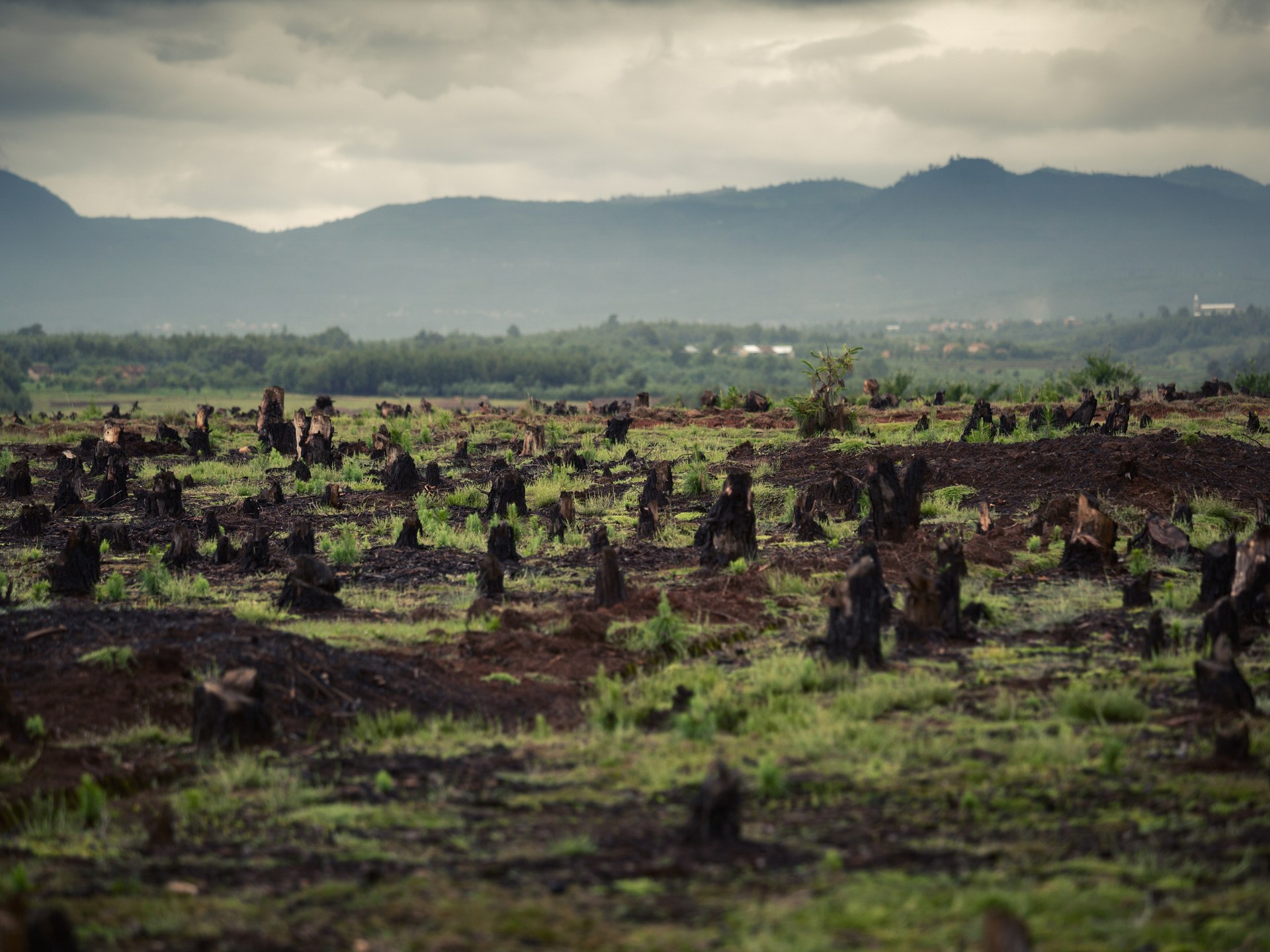An image showing deforestation in Madagascar (Shutterstock)
Every year, March 21 is the International Day of Forests. Forests are the lungs of the Earth, a storehouse of carbon dioxide, and a refuge for many living organisms. African forests represent 14% of the forest area around the world, and recently their areas have been shrinking due to capitalist greed and economic exploitation of these forests.
Unfortunately, there was no data available on the economic projects that were established on deforested forests, until researchers from Wageningen University in the Netherlands obtained accurate data and published them in the journal Scientific Reports.
Insufficient database
Although some national and regional statistics are available that document a trend towards reducing forest area, they lack temporal and spatial accuracy and only include dry forests. Until researchers were able to develop the first map with an accuracy of up to five meters covering vast areas in Africa (the countries of West, Central, East and South Africa), and showing the shrinkage of forests in Africa by 64% from 2001 to 2020, it also shows the uses of land after the removal of all Wet and dry forests.
“What distinguishes this study is the innovative use of satellite images and machine learning algorithms that allowed us to draw accurate and detailed maps of deforestation on a large scale,” says the study’s first researcher, Robert Masolelli, in the press release published by Phys.org on February 15. "Wide and unprecedented, and then we were able to identify the economic uses of the forests."
A map showing the expansion of the cultivation of some crops in the forests of African countries with an accuracy of five meters (Nature)
Maps using satellite data
The researchers relied on high-resolution satellite images provided by the Norwegian International Climate and Forest Initiative (NICVI), and with the help of deep learning methods (an artificial intelligence technique), they were able to analyze this data based on locally available information about 15 different uses of cleared forests. From 30 countries; Including the cultivation of economic crops such as coffee, coffee, cashews, rubber, and palm oil, establishing pastures for cows and sheep, and in the mining industry.
The study found that forest uses vary from one region to another. In general, small-scale agricultural land is the main driver of forest loss in Africa, especially in Madagascar and the Democratic Republic of the Congo, while large-scale agricultural land is widespread in Nigeria and Zambia.
The study also found that the cultivation of economic crops such as cocoa, palm oil, and rubber is common in the humid forests of West and Central Africa, while the cultivation of cashews is widespread in the dry forests of West and Southeast Africa.
Climate challenges
The researchers explained that there were factors that affected the accuracy of the results, such as clouds and weather changes. But on the other hand, the study will effectively contribute to analyzing the impact of economic activities on the environment, and help politicians, conservationists, and scientists follow the various developments that the land is going through in Africa after deforestation.
The general supervisor of the study, Martin Herold, stressed that “following up on these developments is necessary to build targeted conservation strategies, achieve sustainable development goals, and mitigate the environmental impacts of deforestation throughout the African continent.”
Knowing the drivers behind deforestation in Africa and determining its temporal and spatial scope is crucial (Shutterstock)
Why Africa's forests?
Regarding researchers’ interest in Africa’s forests, Martin said: “The new European Union deforestation regulation stipulates that supply chains must provide evidence that imported raw materials such as coffee, cocoa and rubber were not grown on deforested forest land.”
This would provide more transparency to consumers to support them in making purchasing decisions, and support governments and environmental protection agencies in both Africa and the European Union to implement measures to reduce deforestation in favor of expanding the cultivation of economic commodities.
Knowing the drivers behind deforestation in Africa and determining their temporal and spatial scope is crucial to mitigating greenhouse gas emissions and negative impacts on the forest ecosystem and biology.
Source: websites

